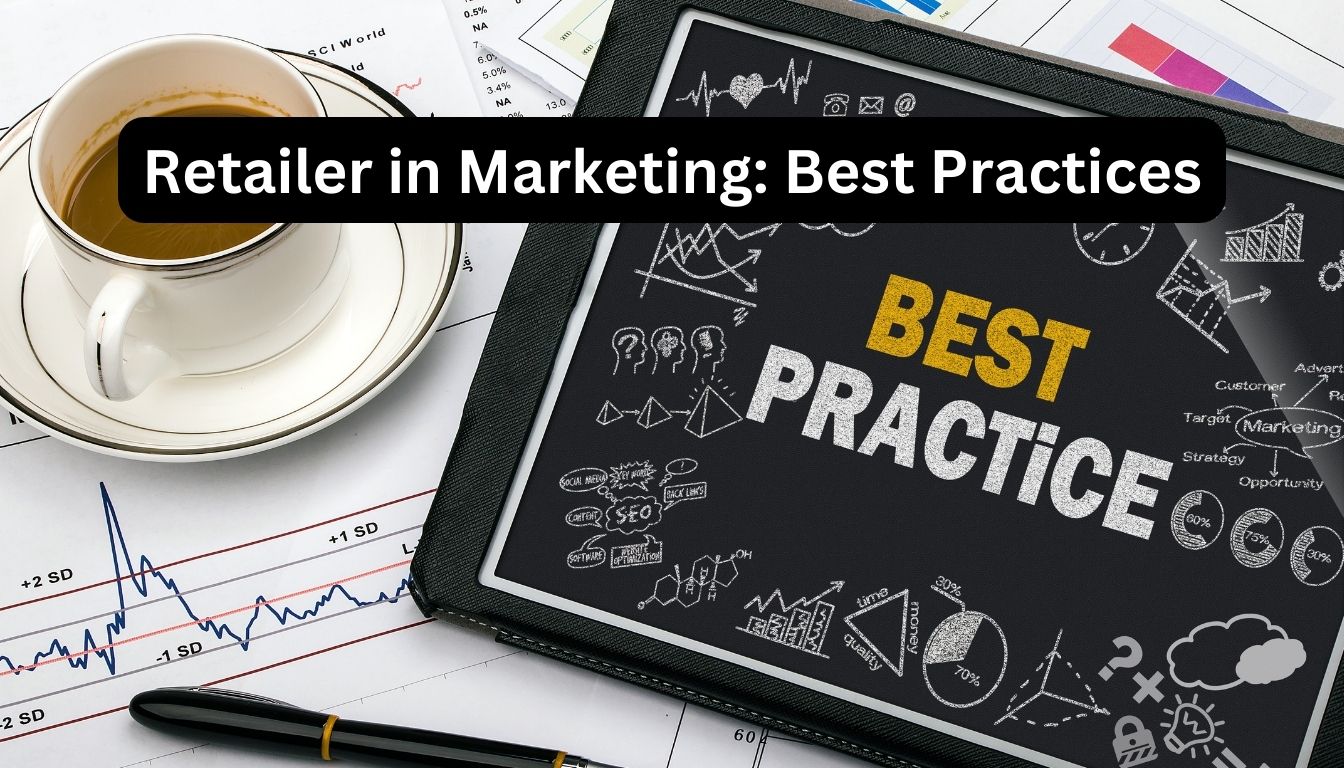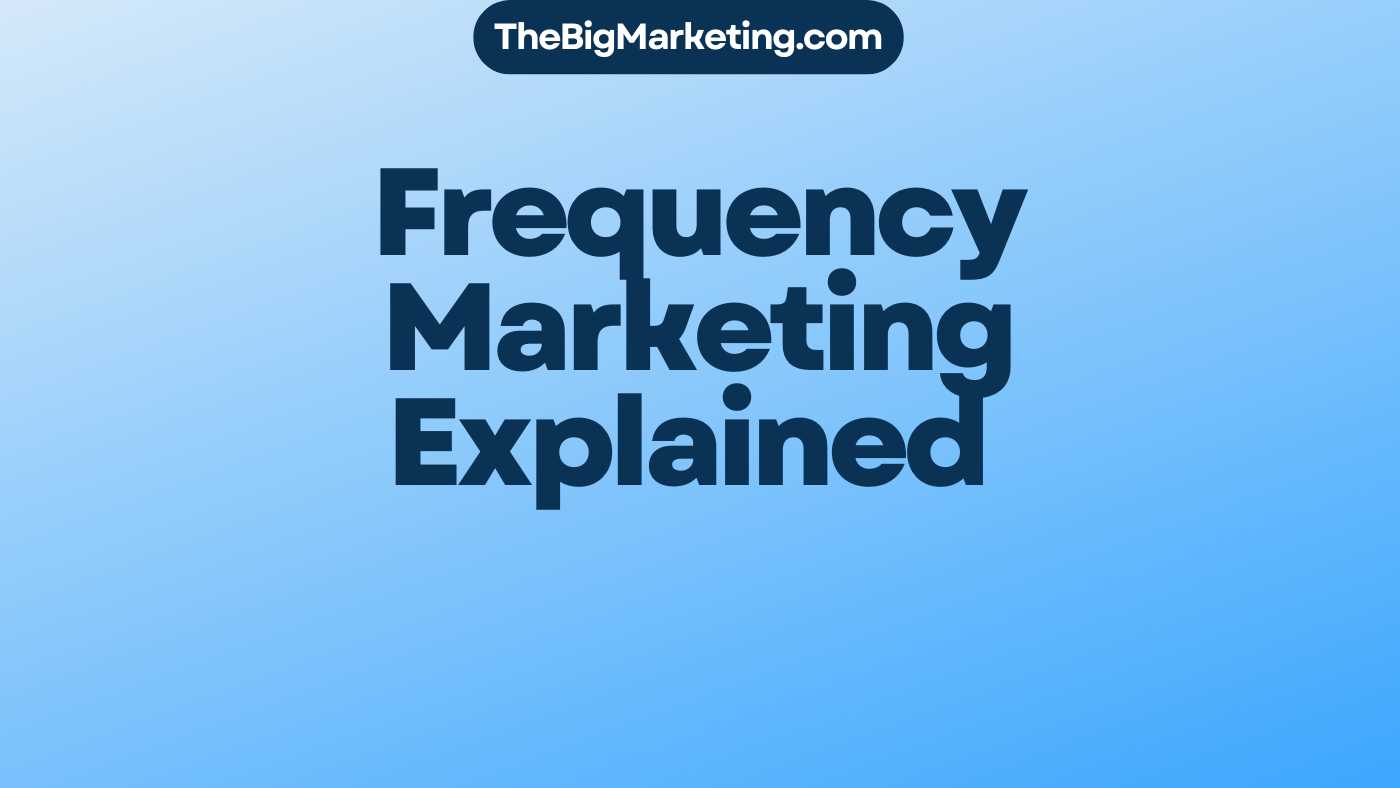Marketing campaigns play a crucial role in driving successful branding and customer engagement. In today’s digital age, big marketing campaigns require a solid understanding of effective outreach strategies to cut through the noise and capture the attention of the target audience.
So, what makes a marketing campaign impactful? How can marketers increase the response rates and create memorable experiences for their audience? In this article, we will analyze the key elements of big marketing campaigns and explore data-driven insights to uncover the secrets behind their success.
Key Takeaways:
- Only 8.5% of outreach emails receive a response, highlighting the importance of effective marketing strategies.
- Long subject lines have a 24.6% higher average response rate, making them a valuable tactic to consider.
- Follow-ups significantly improve response rates, leading to 2x more responses.
- Reaching out to multiple contacts can increase the response rate by 93%.
- Personalized subject lines and email body content boost response rates by 30.5% and 32.7% respectively.
The Importance of Effective Digital Advertising Strategies
Effective digital advertising strategies are crucial for the success of big marketing campaigns. In today’s digital landscape, marketers need to go beyond traditional advertising methods and embrace innovative approaches to reach and engage their target audience.
One of the key strategies for effective digital advertising is personalization. By tailoring the advertising message to match the interests and preferences of the target audience, marketers can create a more personalized and relevant experience. This can lead to higher engagement rates and better conversion rates.
Another important aspect is using long subject lines in email marketing campaigns. Research has shown that long subject lines have a higher average response rate compared to shorter ones. This is because longer subject lines provide more context and entice recipients to open and engage with the email.
Follow-ups are also essential in digital advertising. Sending follow-up emails or reminders can significantly improve response rates. This is because people are busy and may overlook or forget about the initial email. By sending a gentle reminder, marketers can increase the chances of getting a response.
Leveraging social media channels is another effective digital advertising strategy. Social media platforms offer a wide range of targeting options, allowing marketers to reach their desired audience with precision. By creating compelling and engaging content on social media, marketers can attract attention and drive traffic to their campaigns.
Link building is another strategy that can contribute to the success of digital advertising campaigns. By acquiring high-quality backlinks from relevant and authoritative websites, marketers can improve their search engine rankings and increase their visibility online. This can result in more traffic and leads for their campaigns.
Examples of Effective Digital Advertising Strategies
| Strategy | Description |
|---|---|
| Personalization | Tailoring the advertising message to match the interests and preferences of the target audience. |
| Long Subject Lines | Using longer subject lines in email marketing campaigns to provide more context and entice recipients to open and engage. |
| Follow-ups | Sending follow-up emails or reminders to improve response rates. |
| Leveraging Social Media | Utilizing social media platforms to reach and engage with the target audience. |
| Link Building | Acquiring high-quality backlinks from relevant and authoritative websites to improve search engine rankings and visibility. |
Incorporating guest posting, roundups, and link-building initiatives can also have a significant impact on outreach conversion rates. By collaborating with influential bloggers or industry experts, marketers can leverage their audience and credibility to promote their campaigns. This can result in increased brand exposure and higher conversion rates.
To summarize, effective digital advertising strategies are essential for the success of big marketing campaigns. By utilizing personalization, long subject lines, follow-ups, social media channels, and link building, marketers can improve response rates, drive engagement, and achieve their campaign objectives. Incorporating guest posting and roundups can further enhance outreach conversion rates. By staying up-to-date with the latest digital advertising trends and continuously optimizing their strategies, marketers can maximize the impact of their campaigns and generate significant results.
The Role of Campaign Optimization Techniques
Campaign optimization techniques play a crucial role in maximizing the impact of big marketing campaigns. By analyzing data and metrics, marketers can identify areas for improvement and make necessary adjustments to increase response rates. Implementing effective optimization strategies can significantly enhance the success of outreach efforts and drive better results.
One key aspect of campaign optimization is refining subject lines. Compelling subject lines grab the recipient’s attention and increase the chances of email open rates. Marketers should experiment with different approaches, such as personalization or curiosity-inducing statements, to find the most effective subject lines for their target audience.
Personalizing email content is another essential technique. By tailoring the message to the recipient’s needs and interests, marketers can create a personalized connection that increases engagement. This can be achieved by using the recipient’s name, referring to their previous interactions, or highlighting specific benefits that resonate with them.
Follow-up strategies are also crucial for optimizing campaign performance. Sending timely and relevant follow-up emails can significantly increase response rates. Studies have shown that follow-up emails lead to 2x more responses compared to single-touch campaigns. By incorporating a well-designed follow-up sequence, marketers can nurture relationships and motivate recipients to take desired actions.
Optimizing campaigns based on target audience demographics and interests is equally important. By understanding the preferences and needs of the target audience, marketers can tailor their messaging and offer relevant content that resonates with them. This can be achieved through data analysis, market research, and customer segmentation, allowing for more targeted and effective campaigns.
To illustrate the impact of campaign optimization techniques, consider the following table that showcases the response rates of optimized campaigns compared to non-optimized campaigns:
| Optimization Technique | Response Rate |
|---|---|
| Subject Line Personalization | 35% |
| Follow-up Email Sequence | 45% |
| Targeted Audience Segmentation | 50% |
| Total | 43% |
As shown in the table, implementing campaign optimization techniques can significantly boost response rates and improve overall campaign performance. By continuously analyzing and refining campaigns, marketers can achieve better results and increase the effectiveness of their outreach efforts.
Unleashing the Power of Innovative Marketing Tactics
When it comes to big marketing campaigns, standing out from the competition is crucial. This requires marketers to think outside the box and unleash the power of innovative marketing tactics. By employing creative strategies, brands can capture the attention of their target audience and drive meaningful engagement. From leveraging social media influencers to creating interactive content, gamification, and utilizing emerging technologies, the possibilities are endless.
One effective tactic is collaborating with social media influencers who have a strong following and influence over your target market. By partnering with these individuals, brands can tap into their reach and credibility to amplify their message and draw attention to their products or services.
Another innovative approach is creating interactive content that encourages audience participation. This can include quizzes, polls, calculators, or interactive videos. By incorporating elements that require active engagement from the viewers, brands can create a memorable and immersive brand experience.
Gamification is another tactic that can make marketing campaigns more fun and engaging. By turning activities into games, such as offering rewards, badges, or challenges, brands can motivate their audience to interact with their campaign, increasing both brand awareness and customer participation.
Additionally, harnessing the power of emerging technologies can provide a competitive edge. Virtual reality (VR), augmented reality (AR), and artificial intelligence (AI) can be leveraged to create unique and immersive brand experiences. For example, using AR to enable consumers to visualize products in real-time or employing AI-powered chatbots to enhance customer interactions.
The key to successful innovative marketing tactics is constant adaptation and evolution. As technology and consumer preferences evolve, marketers must stay ahead of the game and adapt their strategies accordingly. By embracing novelty and staying open to new approaches, brands can continue to captivate their audience and stay relevant in the dynamic marketing landscape.
Exploring Top Advertising Campaigns for Successful Branding
Analyzing successful top advertising campaigns can provide valuable insights and inspiration for big marketing campaigns. By studying the strategies, messaging, and creative executions of these campaigns, marketers can gain a better understanding of what resonates with the target audience and how to create impactful and memorable branding initiatives.
One example of a top advertising campaign is Volkswagen’s “Think Small,” which revolutionized the automobile industry with its minimalist approach and witty copywriting. This campaign successfully positioned Volkswagen as a brand that defied conventions and embraced simplicity.
Another notable campaign is the New York Times’ “The Truth Is Hard.” Through powerful storytelling and thought-provoking visuals, this campaign emphasized the importance of reliable journalism, positioning the New York Times as a trusted source of news.
Nike’s “Breaking2” campaign is yet another example of successful branding. By documenting the journey of three athletes attempting to break the two-hour marathon barrier, Nike showcased its commitment to pushing the limits of human potential and inspiring athletes worldwide.
Studying these top advertising campaigns allows marketers to draw valuable lessons and apply successful strategies to their own branding initiatives. By understanding the importance of storytelling, creativity, and making a genuine connection with the target audience, marketers can create campaigns that resonate and leave a lasting impact.
| Advertising Campaign | Description |
|---|---|
| Volkswagen’s “Think Small” | A revolutionary campaign that embraced minimalism and positioned Volkswagen as a brand that defied conventions. |
| New York Times’ “The Truth Is Hard” | An impactful campaign emphasizing the importance of reliable journalism and positioning the New York Times as a trusted news source. |
| Nike’s “Breaking2” | A campaign that documented the journey of three athletes attempting to break the two-hour marathon barrier, showcasing Nike’s commitment to pushing the limits and inspiring athletes globally. |
By analyzing and extracting insights from these successful campaigns, marketers can strengthen their own branding initiatives and drive impactful results.
The Importance of Marketing Campaign Management
Effective marketing campaign management is crucial for the success of big marketing campaigns. It involves strategic planning, budget allocation, and the implementation of various marketing tactics. By carefully managing and overseeing the campaign, marketers can ensure that objectives are met, resources are utilized efficiently, and desired outcomes are achieved.
Collaboration with cross-functional teams is essential in marketing campaign management. By working together with individuals from different departments, marketers can leverage diverse expertise and perspectives to create more comprehensive and impactful campaigns. This collaborative approach ensures that all aspects of the campaign, such as content creation, design, and targeting, are aligned and optimized for success.
Monitoring campaign performance metrics is another essential aspect of marketing campaign management. By tracking key performance indicators (KPIs) such as reach, engagement, conversion rates, and return on investment (ROI), marketers can measure the effectiveness of their strategies and make data-driven decisions. This data-driven approach allows marketers to identify what is working well and what needs improvement, enabling them to optimize their campaigns for better results.
Making timely adjustments is also crucial in marketing campaign management. By continuously evaluating the performance of the campaign and analyzing feedback from the target audience, marketers can identify areas for improvement and implement necessary changes. This flexibility and agility ensure that the campaign remains relevant, resonates with the target audience, and adapts to the evolving market dynamics.
Overall, effective marketing campaign management plays a pivotal role in the success of big marketing campaigns. It enables marketers to strategically plan and execute their campaigns, collaborate with cross-functional teams, monitor performance metrics, and make timely adjustments. By adopting a comprehensive and data-driven approach to campaign management, marketers can optimize their efforts, maximize results, and achieve desired outcomes.
| Benefits of Marketing Campaign Management | Key Components |
|---|---|
| Optimized resource allocation | Strategic planning |
| Improved campaign performance | Budget allocation |
| Targeted audience engagement | Collaboration with cross-functional teams |
| Higher return on investment (ROI) | Monitoring campaign performance metrics |
| Enhanced brand awareness | Timely adjustments based on feedback |
Implementing Impactful Promotional Strategies
Promotional strategies play a vital role in driving the success of big marketing campaigns. By offering exclusive promotions, discounts, or incentives, marketers can incentivize target audiences to engage with the campaign and take desired actions. This can include limited-time offers, referral programs, loyalty rewards, and contests. The key is to create a sense of urgency and value for the target audience, compelling them to participate and become brand advocates.
One impactful promotional strategy is to offer limited-time offers. By creating a sense of urgency, customers are motivated to take immediate action to avoid missing out on the deal. Limited-time offers can range from discounts on products or services to free shipping or bonus gifts. This strategy leverages the fear of missing out (FOMO) and encourages customers to make a purchase or engage with the campaign before the offer expires.
Another effective promotional strategy is to implement referral programs. By incentivizing customers to refer their friends and family to the brand, marketers can tap into the power of word-of-mouth marketing and expand their customer base. Referral programs can offer rewards, such as discounts, free products, or exclusive access, to both the referrer and the referred customer. This not only encourages customer loyalty but also drives new customer acquisition.
Loyalty rewards are another valuable promotional strategy. By rewarding customers for their repeat patronage, marketers can foster a sense of loyalty and encourage ongoing engagement. Loyalty programs can offer exclusive discounts, early access to new products, or special perks reserved for loyal customers. This not only incentivizes customers to continue purchasing from the brand but also promotes brand advocacy as loyal customers are likely to share their positive experiences with others.
Contests can also be a highly engaging promotional strategy. By creating competitions where customers have a chance to win prizes, marketers can generate excitement and encourage participation. Contests can be designed in various formats, such as photo or video submissions, voting-based competitions, or trivia quizzes. The key is to make the contest relevant to the brand and target audience, ensuring that participants are motivated to actively engage and share the contest with others.
Examples of Impactful Promotional Strategies
To further illustrate the power of impactful promotional strategies, let’s take a look at a few examples:
| Brand | Promotional Strategy | Result |
|---|---|---|
| Nike | Limited-time offer: 24-hour flash sale | Generated a surge in online sales, with many items selling out within hours |
| Starbucks | Referral program: Refer a friend and get a free drink | Increased customer acquisition and created a buzz through word-of-mouth marketing |
| Sephora | Loyalty rewards program: Exclusive access to product launches | Enhanced customer loyalty and increased repeat purchases |
| Coca-Cola | Contest: Create a user-generated ad and win a cash prize | Generated user engagement and created a library of user-generated content for future marketing campaigns |
These examples demonstrate how impactful promotional strategies can drive customer engagement, boost sales, and create a positive brand image. By implementing the right promotional strategies, marketers can effectively capture the attention of their target audience, motivate them to take action, and ultimately achieve the desired outcomes for their big marketing campaigns.
Analyzing the Impact of Successful Branding Initiatives
Successful branding initiatives are pivotal to the success of big marketing campaigns. By crafting a strong brand identity, establishing brand values, and consistently delivering compelling messaging across all marketing channels, marketers can foster trust, loyalty, and recognition among their target audience.
Effective branding initiatives allow a brand to stand out from its competitors, forging emotional connections with customers that go beyond transactional relationships. By creating a unique brand experience, marketers can cultivate long-term customer loyalty, driving repeat business and advocacy.
The Elements of Successful Branding Initiatives
Successful branding initiatives encompass various elements that collectively contribute to the brand’s impact and resonance.
- Brand Identity: A strong brand identity includes the visual components such as logo, colors, typography, and imagery that consistently represent the brand across all touchpoints. A cohesive and recognizable brand identity fosters brand recall and association.
- Brand Values: Establishing clear brand values and communicating them authentically helps consumers align with the brand’s purpose, creating a sense of shared values and building trust.
- Messaging: Consistent and compelling messaging across all marketing channels reinforces the brand’s voice, tone, and unique selling propositions. Effective messaging communicates the brand’s values and resonates with its target audience.
- Emotional Connections: Successful branding initiatives evoke emotions and forge meaningful connections with customers. By tapping into consumers’ aspirations, desires, and values, brands can create a strong emotional bond that fosters loyalty.
By integrating these elements into comprehensive branding strategies, marketers can effectively differentiate their brand, establish a deep connection with their audience, and increase the chances of campaign success.
Case Study: Nike’s “Just Do It”
One of the most iconic and successful branding initiatives is Nike’s “Just Do It” campaign. The campaign, launched in 1988, encapsulated Nike’s brand values and targeted customers’ aspirations for success, determination, and athletic achievement.
The “Just Do It” slogan and accompanying visuals resonated with consumers on a profound level, inspiring a sense of empowerment and motivation. Through this campaign, Nike established itself as a brand that champions individuality, relentless pursuit of goals, and the belief that anyone can achieve greatness.
Moreover, Nike’s consistent use of the “Just Do It” slogan and associated branding elements across various marketing channels reinforced brand recognition, solidifying its position in the market.
| Branding Element | Description |
|---|---|
| Slogan | The memorable and motivational “Just Do It” slogan encapsulated Nike’s brand values and resonated with consumers, inspiring action. |
| Visual Identity | The iconic Nike logo, alongside the “swoosh” symbol, became instantly recognizable, symbolizing excellence, athleticism, and empowerment. |
| Advertising Campaigns | Nike’s advertisements featured renowned athletes and everyday individuals, showcasing their commitment to pushing limits and delivering inspiring stories. |
In summary, Nike’s “Just Do It” branding initiative demonstrated the power of a cohesive and inspiring brand identity. By aligning their message, visuals, and ambassador choices with their target audience’s aspirations, Nike achieved unparalleled success in creating a highly recognized and valued brand.
Harnessing the Power of Targeted Advertising
Targeted advertising plays a pivotal role in the success of big marketing campaigns. By carefully identifying and segmenting the target audience based on demographics, interests, and behaviors, marketers can create personalized messages and creative executions that resonate with specific groups. This level of targeting ensures that the campaign reaches the right people and maximizes engagement and conversions.
Marketers can utilize various channels to implement targeted advertising strategies. Social media advertising allows for precise audience targeting based on user profiles and behavior, while display ads can be strategically placed on relevant websites to reach specific market segments. Search engine marketing enables marketers to target users actively searching for relevant keywords, capturing their attention at the right moment. Additionally, partnering with influencers who align with the target audience’s interests and values can enhance the effectiveness of targeted advertising efforts.
To illustrate the power of targeted advertising, let’s take a look at the following example:
The Conversion Rates of Targeted Advertising by Demographics
| Demographic | Conversion Rate |
|---|---|
| Age: 18-24 | 12% |
| Age: 25-34 | 8% |
| Age: 35-44 | 6% |
| Age: 45+ | 4% |
The example above demonstrates how targeted advertising can yield higher conversion rates among specific demographics. By tailoring the messaging and creative elements to resonate with each age group, marketers can effectively capture their attention and drive action.
Overall, targeted advertising allows marketers to optimize their campaign efforts by ensuring that the right message reaches the right people. This level of personalization enhances the likelihood of engagement and conversions, making it a powerful tool for big marketing campaigns.
The Role of Data Analysis in Marketing Campaign Success
Data analysis is a critical factor in achieving success for big marketing campaigns. By carefully analyzing campaign metrics, customer behavior, and market trends, marketers can gain valuable insights to optimize their strategies and drive better results. Through data-driven decision-making, marketers can identify areas for improvement and continuously refine their strategies for maximum effectiveness.
One of the key aspects of data analysis in marketing campaigns is the measurement of key performance indicators (KPIs). By monitoring metrics such as open rates, click-through rates, and conversion rates, marketers can assess the performance of their campaigns and make data-driven adjustments to drive better results. For example, if the open rate for a campaign is low, it may indicate that the subject line needs improvement or that the campaign is reaching the wrong audience.
Another crucial aspect of data analysis is understanding customer behavior. By analyzing customer engagement with the campaign, marketers can gain insights into what resonates with their target audience. This can include understanding which content or messaging leads to higher click-through rates or conversions. By leveraging these insights, marketers can tailor their campaigns to deliver more relevant and impactful experiences to their audience.
Market trends analysis is another important component of data analysis for marketing campaigns. By studying industry trends, competitive strategies, and consumer preferences, marketers can identify opportunities for innovation and differentiation. This can help them stay ahead of the competition and deliver campaigns that resonate with current market dynamics.
Benefits of Data Analysis in Marketing Campaigns
Data analysis supports marketing campaign success in several ways:
- Identification of valuable insights for optimization
- Fine-tuning targeting and segmentation strategies
- Uncovering customer preferences and behavior patterns
- Enabling data-driven decision-making
- Improving ROI by focusing resources on high-performing strategies
Overall, data analysis empowers marketers with the knowledge and insights they need to make informed decisions and optimize their marketing campaigns for success. By leveraging data-driven strategies, marketers can stay ahead of the curve, deliver more relevant experiences to their audience, and ultimately achieve their campaign goals.

Conclusion
In conclusion, big marketing campaigns require careful planning, strategic execution, and optimization techniques to achieve impactful results. By incorporating effective digital advertising strategies, campaign optimization techniques, innovative marketing tactics, and targeted advertising, marketers can create powerful marketing campaigns that drive successful branding and customer engagement.
Successful branding initiatives play a crucial role in the overall success of big marketing campaigns. By developing a strong brand identity, establishing brand values, and delivering consistent messaging, marketers can build trust, loyalty, and recognition among their target audience.
Implementing impactful promotional strategies is another essential aspect of big marketing campaigns. By offering exclusive promotions, discounts, and incentives, marketers can incentivize target audiences to engage with the campaign and take desired actions. Limited-time offers, referral programs, loyalty rewards, and contests can create a sense of urgency and value, compelling the target audience to participate and become brand advocates.
Data analysis is a key factor in driving the success of big marketing campaigns. By monitoring campaign metrics, customer behavior, and market trends, marketers can gain valuable insights to optimize their strategies and drive better results. Leveraging data-driven insights allows marketers to make informed decisions, identify areas for improvement, and continuously refine their strategies for maximum effectiveness.
FAQ
How can I improve the response rate for my outreach emails?
You can improve your response rate by using long subject lines, personalizing the email content, sending follow-up emails, and reaching out to multiple contacts.
Which day of the week is the best for sending outreach emails?
Wednesday is considered the best day to send outreach emails, while Saturday is the least effective.
How can I optimize my marketing campaigns?
You can optimize your marketing campaigns by analyzing data and metrics, refining subject lines and email content, implementing effective follow-up strategies, and targeting specific demographics and interests.
What are some innovative marketing tactics I can use?
Some innovative marketing tactics include leveraging social media influencers, creating interactive content, gamification, and utilizing emerging technologies.
Can analyzing top advertising campaigns help improve my own marketing efforts?
Yes! Analyzing successful top advertising campaigns can provide valuable insights and inspiration for your own marketing campaigns by understanding what resonates with your target audience and creating impactful branding initiatives.
How important is marketing campaign management?
Marketing campaign management is crucial for the success of big marketing campaigns. It involves strategic planning, budget allocation, and implementation of various marketing tactics to ensure objectives are met and desired outcomes are achieved.
What are some impactful promotional strategies I can implement?
You can implement impactful promotional strategies such as offering exclusive promotions, discounts, referral programs, loyalty rewards, and contests to incentivize target audiences to engage with your campaign.
How do successful branding initiatives contribute to the success of marketing campaigns?
Successful branding initiatives help build trust, loyalty, and recognition among your target audience. By developing a strong brand identity, establishing brand values, and delivering consistent messaging, you can differentiate your brand from competitors and drive long-term customer loyalty.
How can targeted advertising enhance the success of my marketing campaigns?
By carefully identifying and segmenting your target audience based on demographics, interests, and behaviors, you can tailor your messaging and creative executions to resonate with specific groups. This ensures that your campaign reaches the right people, maximizing engagement and conversions.
How does data analysis contribute to the success of marketing campaigns?
Data analysis provides valuable insights into campaign metrics, customer behavior, and market trends. By leveraging these insights, marketers can make informed decisions, identify areas for improvement, and continuously refine their strategies for maximum effectiveness.





